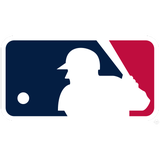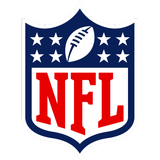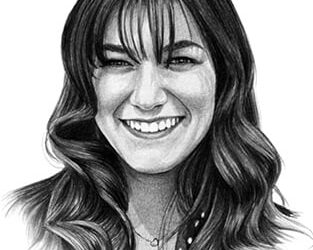Have the Giants finally found their star in Jung Hoo Lee?

<!–>
For years, the San Francisco Giants took mighty swings in pursuit of a superstar slugger to build around.
And they whiffed.
They fell short in the Bryce Harper sweepstakes in February 2019, failed to lure Northern California native and Yankees captain Aaron Judge back to the Bay Area in December 2022, then finally got their guy that winter in Carlos Correa only to balk on the agreement after a failed physical. A year after that, they came up empty again in their pursuit of Shohei Ohtani.
If the first month of the 2025 season is any indication, maybe the winds of change are upon us.
ADVERTISEMENT
–>
Maybe, the “Grandson of the Wind” could provide the solution.
Unable to land the slugging centerpiece they coveted a year ago, the Giants took a gamble on a player with a different type of offensive profile. Just three days after Ohtani announced his decision to go to Los Angeles, San Francisco pivoted to Jung Hoo Lee, a Korean Baseball Organization MVP outfielder known more for his elite contact skills than his pop at the plate.
Lee hailed from Korean baseball royalty. His father, Jong Beom Lee — nicknamed “Son of the Wind” — was a KBO legend. That created big shoes to fill for the younger Lee, who broke into the KBO at 18 years old. He was not smothered by the lofty expectations. He hit .324 as a rookie and proceeded to bat .340 with more walks than strikeouts over his seven-year KBO career.
The nickname “Grandson of the Wind” stuck.
“Back in the past, I would say there was a small pressure in it,” Lee said last week through his interpreter, Justin Han. “I’m so used to it now.”
He has not backed away from the moniker. It is how he introduced himself to the Giants after he signed a six-year, $113 million contract last December and became the highest-paid Korean-born hitter in MLB history.
Lee’s contact-oriented approach made him unlike most nine-figure earners. In his best season as a 23-year-old in 2022, Lee hit .349 and launched 23 home runs for the Kiwoom Heroes. But he averaged fewer than 10 homers per season, and while no one doubted his plate discipline or bat-to-ball skills, there were questions about his ability to hit for power and catch up to big-league pitching.
Those questions still lingered after his abbreviated debut season.
San Francisco players and coaches who watched Lee in 2024 saw his ability to drive the baseball in batting practice, but he struggled to consistently carry that skill over to games. He hit .262, but he was slugging just .331 and hitting 17% below league average by wRC+ when he crashed into the wall in center field at Oracle Park and dislocated his shoulder, ending his season on May 12.
Giants manager Bob Melvin believes Lee, whose expected statistics were much better than the actual numbers he produced last year, was “a little unlucky.” But for 37 games last year, during which Lee produced just six extra-base hits, it looked like the Giants might have overpaid.
With 16 extra-base hits through 25 games in 2025, it no longer appears that way.
Lee has become the face of the Giants’ resurgence this season. The team is 17-9, tied for the second-most wins in the National League, while Lee is tied for the major-league lead in doubles and ranks in the top 10 in both batting average and wins above replacement.
“He’s a top-five player in the league, in my opinion,” Giants infielder Tyler Fitzgerald told FOX Sports last week.
Two weeks ago, Lee put on a power display in a multi-homer effort at Yankee Stadium. The Giants’ burgeoning star finished the series with three home runs, and while it’s worth pointing out those remain his only three homers of the season, the performance in New York provided an example of the increased pull-side power he’s managing to generate in his second season.
“If he squares a ball up, he’s going to be able to drive it,” Melvin said. “We’ve seen him drive it all over.”
And yet, it’s still Lee’s preternatural contact skills that separate him. One at-bat last week left Fitzgerald particularly awestruck.
On April 17, Lee sat for the first eight innings. He emerged in the ninth to face Phillies flamethrowing southpaw Jose Alvarado. The reliever dotted the outside corner with a 100.3 mph fastball. Lee chopped the pitch up the middle for a base hit.
It was one of just two hits that Alvarado has surrendered to a left-handed batter all season; Lee has both of them.
“It’s crazy,” Fitzgerald said. “It’s not human.”
“He sees the ball so early,” Melvin added. “It’s remarkable.”
Lee has a .969 OPS overall and is slugging over .500 against both righties and lefties, whom he struggled to solve last season.
He’s the only left-handed hitter with multiple hits off southpaws on pitches of at least 99 mph this year, and he’s the only lefty with at least three hits off pitches of at least 99 mph regardless of the handedness of the pitcher.
There were the two singles against Alvarado, plus another knock a week prior when Lee turned on a 99.7 mph fastball on the outer edge from Reds ace Hunter Greene. That’s despite the fact that Lee never saw a single 99 mph pitch last season and was unaccustomed to facing that kind of velocity while playing in the KBO.
Lee’s success has helped catalyze the Giants’ success, beginning an auspicious start to the Buster Posey era and electrifying a jilted fanbase ready to get behind a star. Fitzgerald believes Posey’s presence and the experience last year’s Giants rookies gained have had an impact on the hot start.
None of those rookies have taken a bigger leap than Lee.
At Oracle Park, the buzz around the Korean sensation is palpable. There are already two different fan groups for Lee — the Jung Hoo Crew, organized by the team, and the Hoo Lee Gans, organized by 51 fans (in honor of his No. 51) in fire wigs.
Lee says he’s “very thankful” for the support. The 26-year-old, still adjusting to life in the big leagues, does not seem overwhelmed by the attention, just as he didn’t when he followed in his father’s footsteps in Korea.
A year of experience helps.
“It’s a difference, in now I know what’s going to happen tomorrow,” Lee said. “I know what the next day is going to [look] like.”
Lee already has seven more doubles, two more triples, one more homer and twice as many RBIs in 50 fewer plate appearances than he had last season. His .333 batting average ranks fifth in the National League, but it’s his increase in power that is most staggering.
Among players with at least 150 plate appearances last season, Lee ranked outside the top 300 in slugging; this year, he ranks 11th.
“It’s about the barrel,” Lee said. “What I feel like this season is happening is a lot of the pitches I hit are going to left-center, right-center, going into the gap. It’s just hitting the barrel.”
After watching video from last season, Lee felt that pitchers were often aggressive in the zone against him. He sought to respond more aggressively in 2025.
He’s swinging more often this year, particularly on the first pitch. With his already elite contact skills, he seems willing to swing and miss a few more times (he still has one of the lowest whiff rates in MLB) if it means catching a few more barrels. He’s not swinging any harder this year — in fact, his average bat speed is actually slower than it was in 2024 — but he’s finding the sweet spot of the bat, pulling the ball in the air more frequently and eliminating the problem areas in his swing that plagued him in a small sample last season.
A significant reason for his jump in production is his newfound ability to cover the outer edge of the plate, as evidenced by those at-bats against Alvarado and Greene. Last year, Lee’s attempts to adjust to higher velocity yielded some changes in his swing. Entering the 2025 season, he sought to recapture more of what made him a special hitter in Korea.
He already has an open stance, but he opened it even more, moved closer toward the plate, created more distance between his feet and moved slightly deeper in the box. Only three qualified hitters this year stand closer to the plate than Lee, and only eight have a more open stance. He wanted to put himself in a better position to handle sinkers and cutters that moved away from him.
“When I played in the KBO, that’s when I played like that,” Lee said. “I just brought the same mechanism, and I feel like it’s working.”
Last year, he had a .222 batting average and .267 slugging percentage on pitches on the outer third of the plate. Those numbers have increased to .346 and .462, respectively, early this year.
He went from hitting well below league average last season to 70% better than league average through the early portion of this year. He is the seventh most valuable player in MLB by fWAR and is hitting over .300 against fastballs, breaking balls and offspeed pitches.
Even if he doesn’t sustain his sensational slugging numbers — a possibility given his pedestrian hard-hit rate — his elite bat-to-ball skills, ability to catch up to velocity and hit all different pitch types, neutral splits, above-average defense and speed on the bases provide a high floor and paint a picture of a distinctive talent.
After years of whiffing on star sluggers, the Giants might have found a star in a slugger who rarely whiffs.
“Look at the numbers right now,” Melvin said, “and they’re real.”
Rowan Kavner is an MLB writer for FOX Sports. He previously covered the L.A. Dodgers, LA Clippers and Dallas Cowboys. An LSU grad, Rowan was born in California, grew up in Texas, then moved back to the West Coast in 2014. Follow him on X at @RowanKavner.
<!–>
recommended

Get more from Major League Baseball Follow your favorites to get information about games, news and more
–>


